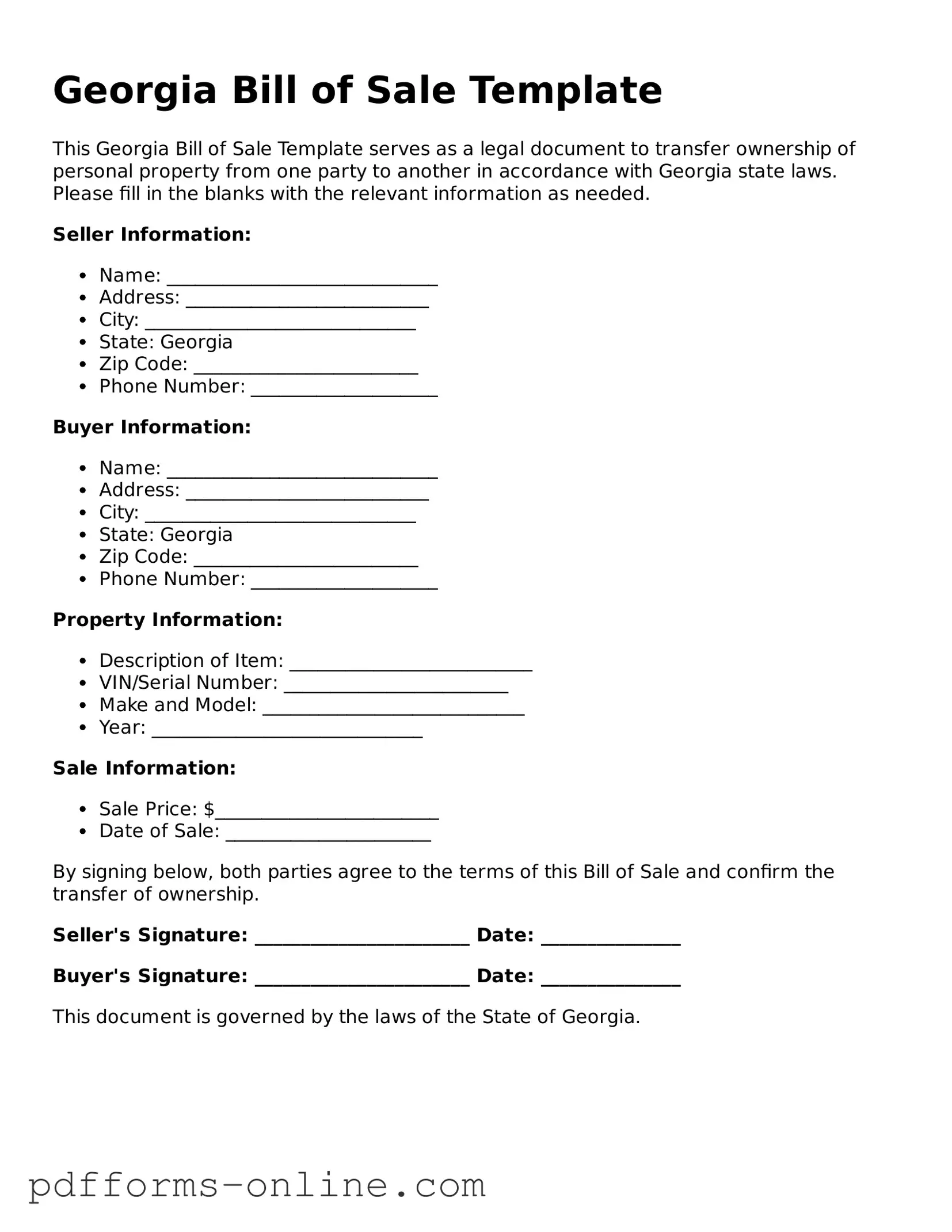The Georgia Bill of Sale form shares similarities with a Vehicle Bill of Sale. This document is specifically designed for the transfer of ownership of a motor vehicle. It typically includes details such as the vehicle identification number (VIN), make, model, and year of the vehicle. Just like the general Bill of Sale, it serves as proof of the transaction and outlines the terms agreed upon by both the seller and the buyer, ensuring that both parties have a clear understanding of the sale conditions.
Another document akin to the Georgia Bill of Sale is the Personal Property Bill of Sale. This form is used for the transfer of ownership of personal items, such as furniture, electronics, or collectibles. Similar to the Bill of Sale, it details the items being sold, their condition, and the agreed-upon price. Both documents protect the interests of the seller and buyer by providing a written record of the transaction.
A Lease Agreement can also be compared to the Georgia Bill of Sale, albeit in a different context. While a Bill of Sale transfers ownership, a Lease Agreement outlines the terms under which one party can use property owned by another for a specified period. Both documents require clear terms and conditions to avoid misunderstandings. They serve as legal contracts that protect the rights of both parties involved.
The Warranty Deed is another document that bears resemblance to the Georgia Bill of Sale, particularly in real estate transactions. A Warranty Deed transfers ownership of property and guarantees that the seller has the right to sell it. Like a Bill of Sale, it provides a record of the transaction and includes details about the property. Both documents are essential for establishing ownership and ensuring that the transaction is legally binding.
In the context of real estate, a Quitclaim Deed is similar to the Georgia Bill of Sale in that it transfers interest in property without warranties. This means that the seller does not guarantee that they own the property free and clear of other claims. Both documents serve to formalize the transfer of ownership, but the Quitclaim Deed does so with less assurance regarding the seller's title.
The Affidavit of Title is another document that can be likened to the Georgia Bill of Sale. This affidavit is often used in vehicle transactions to confirm that the seller has legal ownership and the right to sell the vehicle. Like the Bill of Sale, it provides a written statement that can help protect the buyer against potential claims of ownership from third parties.
A Release of Liability form is also similar in function to the Georgia Bill of Sale. This document is often used when a seller wants to absolve themselves of any future claims related to the sold item. While the Bill of Sale establishes ownership transfer, the Release of Liability protects the seller from any legal issues that may arise after the sale, providing a layer of security for both parties.
Another document that parallels the Georgia Bill of Sale is the Assignment of Benefits form. This form is often used in insurance contexts, allowing a policyholder to transfer their rights to benefits to another party. Both documents require clear identification of the parties involved and the specifics of the transfer, ensuring that all parties understand their rights and responsibilities.
The Gift Deed is similar to the Georgia Bill of Sale in that it transfers ownership of property without an exchange of money. This document is used when one party wishes to give property to another as a gift. Both the Gift Deed and the Bill of Sale provide a formal acknowledgment of the transfer, ensuring that the recipient has clear ownership of the property.
Finally, the Power of Attorney can be compared to the Georgia Bill of Sale in terms of granting authority. While the Bill of Sale transfers ownership of an item, a Power of Attorney allows one person to act on behalf of another in legal matters. Both documents require careful consideration and clarity regarding the rights being transferred, ensuring that all parties are aware of their roles and responsibilities.
